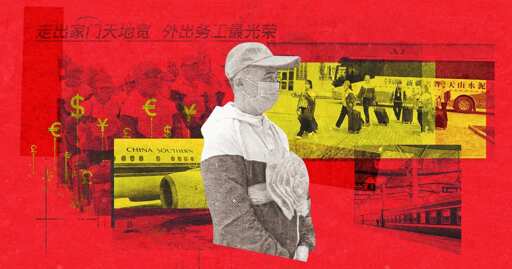cross-posted from: https://lemmy.sdf.org/post/37086375
[…]
[An investigation] can reveal for the first time that global brands [like LG, Apple, Samsung] directly own factories receiving workers from China’s so-called labour transfer scheme, exposing how some have a hand in the oppression and exploitation of ethnic minorities in the country.
[…]
Major Chinese companies, including some of the world’s leading appliance manufacturers, also operate factories taking Xinjiang workers.
These businesses, as well as some of the lesser-known factories further back in the supply chain, are financed by state pension funds from Europe and North America, as well as a string of other major financial institutions. Taken together, the investigation brings to the fore the deep connection between global capital and the forced labour that is woven throughout much of China’s manufacturing economy.
[…]
In many cases, international investors need to set up a joint venture with a local partner in order to access the lucrative Chinese consumer market or to run a factory.
It’s an arrangement, research shows, that helps the government exercise control over foreign companies. Kirsten Asdal, a China risk advisor for investors and corporations, said that joint ventures are about embedding Communist Party leverage over foreign investments, through measures like requiring committees of party members in companies, acquiring board seats and controlling licensing.
Beijing has “built up arms of control into these foreign companies systematically over the last 20 years,” Asdal said. “They can no longer say no.”
International companies have far more questions to answer about forced labour in their own assembly lines. Reports connecting Chinese companies to the Xinjiang labour transfer programme have up to now only focused on supplier factories, not the plants owned by the brands themselves.
[…]
After all, China is no longer just the world’s factory. Home-grown companies have matured into global heavyweights, and appliance brands were among the earliest wave of Chinese labels to gain recognition in overseas markets.
“We’ve never seen the direct involvement of global brands in the Xinjiang government transfer program before,” said Laura Murphy, a professor focusing on labour and human rights. She previously advised the Biden administration on trade enforcement.
TBIJ’s investigation uncovered evidence of forced labour at plants owned by Hisense, Midea, Haier, and TCL. One of the five TCL facilities with Xinjiang workers is co-owned by Italy’s De’Longhi. Factories owned by Chinese footwear and car brands were also implicated.
More than 150 people were sent to Hisense in Guangdong from the infamous Xinye internment camp in Hotan, southern Xinjiang in 2018, according to Chinese state media. Operating under a “semi-militarised” system, with ideological assessments and “punishments”, the camp transforms farmers into factory workers, according to a government report on local labour transfer efforts. In 2018, state media claimed that “extremist ideas previously poisoned the minds of many trainees” at the camp.


